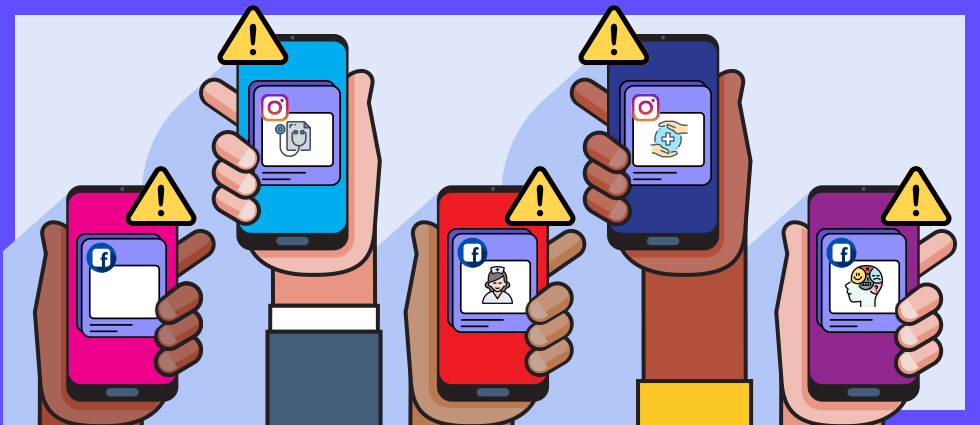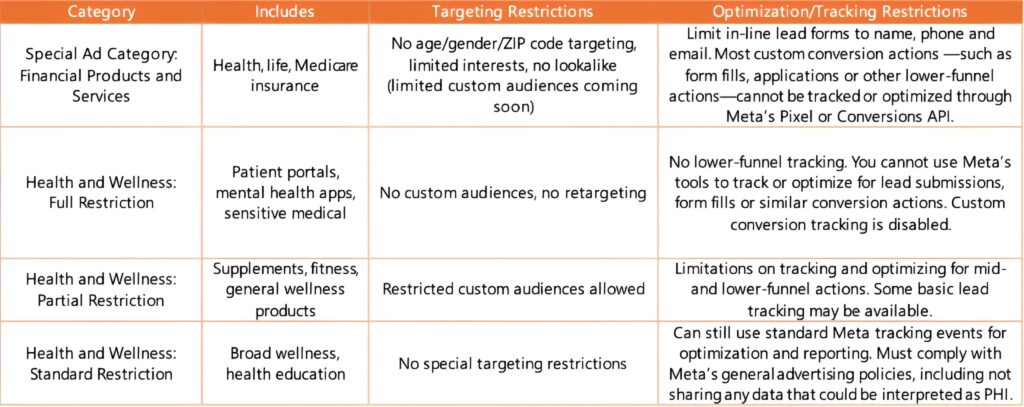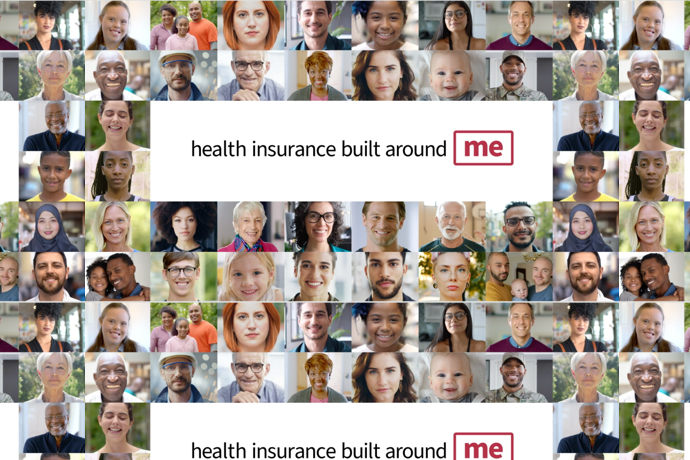Meta’s Healthcare Ad Changes: What Regional Plans Need to Know

As Meta continues to evolve its ad platform to align with privacy regulations and shifting user behavior, healthcare marketers are feeling the impact. For regional health plans, these changes aren’t just technical – they reshape how campaigns are built, how success is measured and what’s even possible within the Meta platforms.
In our ongoing blog series on navigating the digital ecosystem, we’ve been unpacking the unique challenges regional health plans face in digital media. (You can catch up on previous posts here.)
This post breaks down the changes in Meta’s core advertising platforms (Facebook and Instagram), what those changes mean for healthcare marketers and the adjustments that we have been making for our clients.
What Changed Within Meta
Meta has made several recent changes to how its ad platform works on Facebook and Instagram. The first step in understanding which changes apply to your account is to understand how Meta is classifying your business or campaign. In general, Meta is cracking down on regulated industries, including health and finance, primarily due to heightened privacy concerns, regulatory pressure and the need to prevent discrimination and misuse of sensitive personal data.
Meta has quietly been rolling out changes since January 2025, with some areas well-documented on the Meta platform and other areas not so clearly defined. While Meta continues to work through its updates and enhanced restrictions, we are taking a closer look at what we have experienced and learned.
- Meta expanded its definition of the special ad category called “Financial Products and Services” to encompass all insurance products, including health insurance.
- Meta also created a tiered classification system under their “Health and Wellness” category in an effort to align with the strict compliance requirements against collecting and sharing protected health information (PHI).
- As an advertiser, you first need to understand which category you fall under and then adjust your campaign structure accordingly.
If you are marketing health insurance products, you fall under the restrictions defined under the special ad category for “Financial Products and Services” and, depending on the circumstance, can also be classified under one of the three levels of restrictions under the “Health and Wellness Policy.” If you are a healthcare provider and are promoting doctor’s office visits, information on specific medical conditions or clinical studies, your ads will fall under the strictest restrictions.
This structure can be particularly confusing for Payviders, which may have one Meta business account for both the hospital/healthcare system and the insurance products. The health insurance products fall under the special ad category for “Financial Products and Services,” while the healthcare system content will fall into “Health and Wellness.” Depending on your healthcare business and goals, it may be best to create separate ad accounts.
The table below gives a high-level look at the restrictions and how they will impact reporting and optimization. It’s important to note that Meta is continually evolving and modifying its guidelines and requirements.

The changes on Meta are intended to improve user privacy and data integrity. For regional health plans with limited budgets, the limitations in targeting and tracking can create real challenges, especially when so many have benefited from conversion tracking and optimization. Regional health plans will need to consider broader upper-funnel strategies and implement more robust tracking within their compliant web analytics tool to gather insights once readily available within the Meta platform.
What You Can Still Do
Despite these changes, Facebook and Instagram remain valuable platforms, especially for awareness, education and audience engagement. Here’s how regional plans can adapt.
1. Shift from lower-funnel to upper-funnel approach
Use Meta platforms to build awareness, drive site traffic, educate consumers and promote health plan benefits, especially during early decision-making phases. These upper and mid-funnel objectives are often easier to measure and still build audience familiarity. Plus, upper funnel broader audience targeting will reach more people at a lower cost per impression.
2. Improve the off-platform experience
If you’re driving traffic to a landing page, make sure it loads quickly, communicates value and gives the user a clear next step (e.g., download a plan brochure, start a zip code lookup or watch a video). Set up tracking and KPIs to continue to measure results. Even if you are not optimizing for lead generation through Meta, you can still track and measure conversion optimization on your landing page.
3. Consider Investing in compliant solutions to leverage first party data and custom audiences
To maximize the effectiveness of Meta advertising while adhering to evolving privacy regulations, healthcare marketers should prioritize investment in compliant solutions that enable the secure use of first-party data and custom audiences. By adopting privacy-centric data management platforms and ensuring all data usage aligns with HIPAA and other regulatory standards, healthcare organizations can build robust custom audiences for Meta campaigns without compromising compliance. This approach not only enhances targeting precision and campaign performance but also builds trust with consumers by demonstrating a commitment to data privacy.
4. Adjust to Changes in Lead Generation Collection and Tracking
You can continue using Meta’s in-line lead generation forms to drive traffic to a landing page, but this approach will limit the information you can collect. You’ll only have access to Meta’s basic fields: name, email address, and phone number. With less qualifying information available, you’ll need to develop a different email nurturing strategy to qualify and engage these leads as you guide them through your sales cycle.
If you prefer to collect leads on your website using a dedicated landing page designed to gather more comprehensive information, you’ll face limitations in how much data you can pass back to Meta through the Conversion API. In this case, consider adjusting your Facebook campaign objective to focus on Landing Page Visits instead. You can still use the data collected on your website to measure overall performance. This approach allows you to track leads through your analytics tools, though Meta won’t be able to optimize for conversion objectives.
Make Meta Work with Your Ecosystem
In today’s regulatory and technical environment, Facebook and Instagram shouldn’t be the sole engines for lead generation. But they can still play a powerful supporting role to raise awareness, reinforce brand familiarity and nurture interest.
Use it alongside paid search, programmatic display, direct mail and content marketing to guide consumers across the full journey.
And when evaluating results, don’t just look for direct leads. Instead, ask:
- Did Meta platforms drive qualified traffic?
- Did they increase time on site?
- Did they support conversions on other channels?
These are the signals that matter.
With all the changes Meta has rolled out in 2025, now is a critical time to reassess how to effectively incorporate the platform into your broader marketing strategy. While Meta remains a powerful channel for reaching and engaging your target audience, success depends on evolving your approach to maximize both impact and efficiency.
This blog is part of our ongoing series on the digital ecosystem for regional health plans. If you missed our first two posts, check them out:
Stay tuned for the next blog in our series!
At Media Logic, we help health plans recalibrate their digital strategies, find clarity in complexity and perform where it counts. Ready to navigate what’s next? Reach out today.






